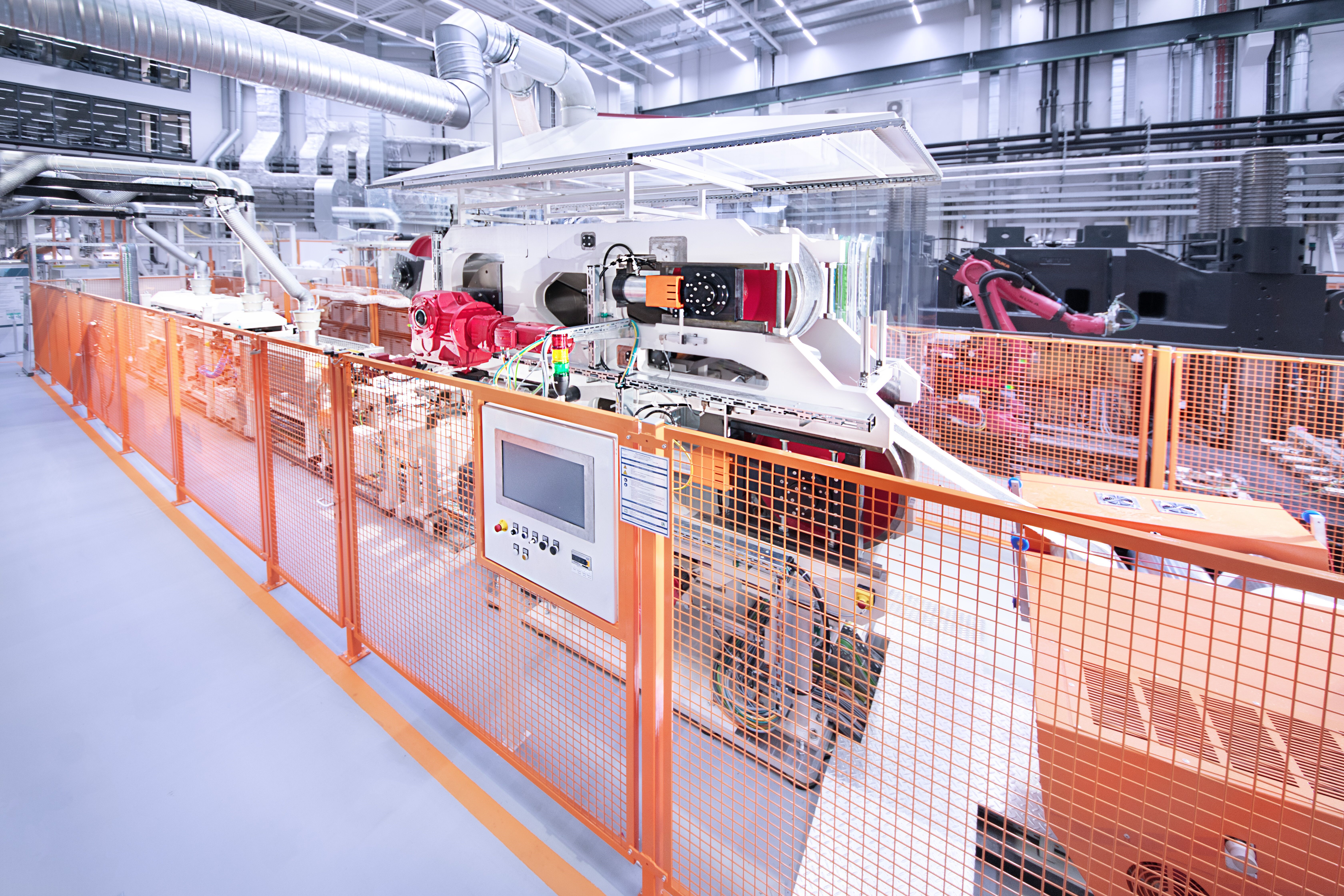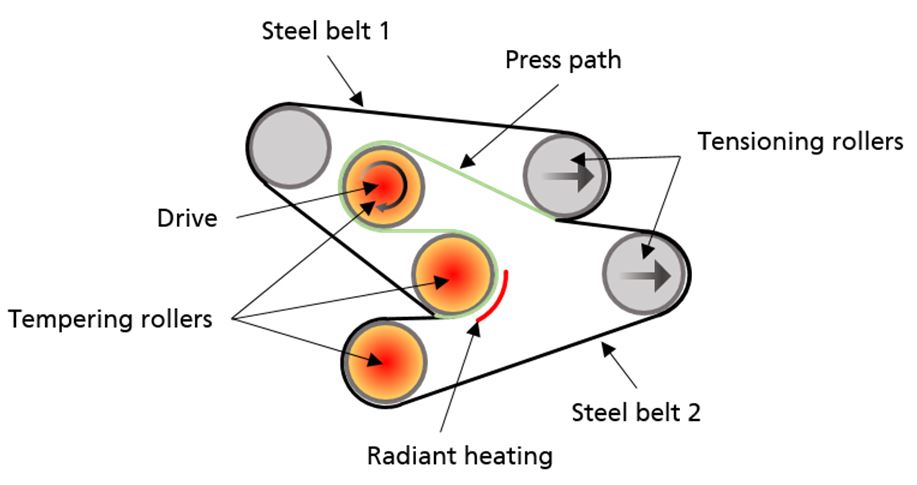The calender direct impregnation system enables continuous and thus cost-optimized production of fiber-reinforced thermoplastic semi-finished products. Various modules are available for additional pre- and post-treatment of the materials in the process chain (Fig. 2).
Flat semi-finished products, such as (hybrid) fiber fabrics or fabrics, nonwovens and thermoplastic film are ideally fed to the process on a roll. It is also possible to feed individual cuttings. In an infrared module upstream to impregnation calender, coatings of the fiber material can be burned off or plastic can be preheated.
The material is further heated in the impregnation calender (Fig. 3) and pressed between two steel belts in a roller system. The impregnation calender is followed by the calibration calender for further pressing to a desired height and smoothing of the surface. At the end of the production chain there are edge trimming, cross cutting modules and a module for winding the material.
The material produced is therefore taken from the system in the form of plates or wound on a roll. Adding or removing individual modules or changing the order of the modules enables the processing of various materials in a flexible, needs-based production chain.
 Fraunhofer Project Center Wolfsburg
Fraunhofer Project Center Wolfsburg

